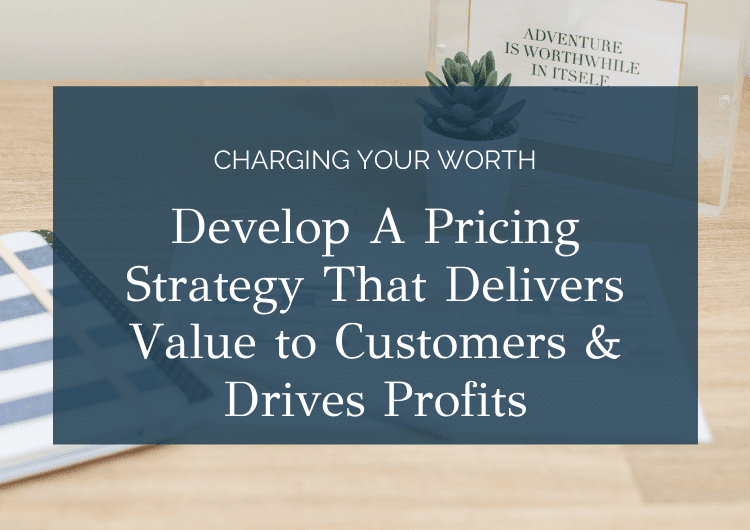Charging Your Worth – Develop A Pricing Strategy That Delivers Value to Customers & Drives Profits
October 17, 2019

When setting the pricing for your business, it’s important to know how to charge a fair price for your products and services, while still leaving room to generate a profit. Finding the right balance can be one of the more daunting tasks a business owner faces. There is an art to creating the right pricing strategy for your business, but you must understand what is happening in and around your business. Below, we offer three important things to consider when creating a pricing strategy for your business.
3 Key Components To Developing a Pricing Strategy
#1 – Costs and Expenses
Before determining your pricing and profit margin structure, you must first truly understand your costs and expenses.
For product-based businesses, you will first want to understand and calculate your cost of goods sold, aka “COGS.” This is the actual cost of the products that you sell. You will need to account for all of the costs that go into each item you sell – both your raw materials and finished goods costs. I encourage that you actively find ways to keep COGS as low as you can, by regularly taking your costs out to bid and negotiating the best deals that you can find in the market.
Next, you will need to consider all of your expenses, such as labor, rent, freight, insurance, marketing, and everything else that goes into running a successful business. Keep in mind that some of your expenses are fixed while others are variable and will change from month to month. Your fixed costs will not change as volume increases or decreases, while your variable costs do. Fixed costs often go overlooked when evaluating what to charge for pricing, so don’t forget to factor them in. While analyzing your costs, look for any that may not be contributing to your business and consider cutting those items from your budget. A regular review of your profit and loss statement can help you identify trends in your expenses where reductions can be made.
It’s critical to have a good handle on the total cost of each product or service that you sell, including your time spent. You’ll need to have a good grasp on these numbers when finalizing the pricing and profit margin structure for your business.
#2 – Value to The Consumer
When determining your pricing strategy, it is just as important to consider the value you are providing to your clients. Ask yourself these questions…
- What are your customers getting from your products and services?
- Are you able to quantify that value?
- Is what you provide easily replicated somewhere else?
- Is your product or service unique?
- Can you differentiate your offerings from other similar products and services?
Step back for a minute and put yourself in your customer’s shoes. Would you find value and spend your own money at these price points? If yes, then you are on the right track! If not, you may need to rethink and adjust the pricing strategy accordingly.
#3 – Market Pricing
It’s good practice to regularly check the market to ensure you are charging your customers the right amount. It may not always be an exact comparison, but you will gain solid reference points to help keep your business competitive. In fact, you’ll sometimes find that you are actually undercharging which is an opportunity to pick up additional margin. However, you won’t know if you are charging the right prices, or even if you’re able to charge more, if you aren’t paying attention to what the competition is doing.
Figuring It All Out…
Creating a pricing strategy that works for your business is imperative to your success. You’ll need to stay aware of what is happening around you by keeping up with the latest industry knowledge, news, and information. Attend events and talk to people in your industry as you can gather insights as to how others determine their pricing strategies. Also, take the time to listen to your customers and keep a pulse on the market. Things change over time including the market, technology, manufacturers, costs, etc., and you don’t want to be the last to find out or be surprised when your sales drop.
Once you understand your costs, you have set your pricing and margins, and you have a solid sales and marketing plan, the best indication of a great pricing strategy will be to see how the market reacts. Always keep in mind that you are in charge of your pricing and you have the flexibly to adjust over time to evolve into what works best for you and your business.

